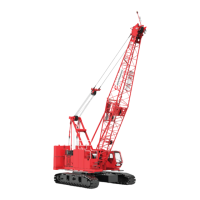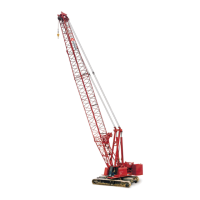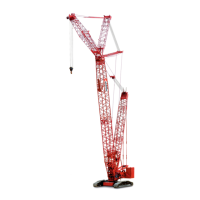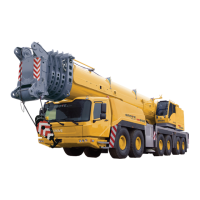POWER TRAIN MLC300 SERVICE/MAINTENANCE MANUAL
7-22
Published 11-22-17, Control # 257-02
EXHAUST AFTERTREATMENT SYSTEM
See Figure 7-19 for the following instructions.
Table 7-3. Abbreviations
The engine exhaust is treated to significantly reduce the
amount of harmful by-products of combustion from
contaminating breathable air.
The APS captures soot and ash from the engine exhaust:
• Soot is partially burned fuel particles that occur during
normal operation (black smoke).
• Soot is automatically removed by a process called
regeneration.
• Ash is partially burned engine oil particles that occur
during normal operation.
Engine Regeneration and Inhibit
See Section 3 of the MLC300 Operator Manual for operation
of the Engine Regeneration/Inhibit switch in the operator
cab.
Tier 4 Main Display Icons
Refer to MLC300 Main Display Operation Manual for
identification of the tier 4 icons that appear in the Crane
Systems Status Bar of the main display.
DEF Tank
The DEF tank (1) houses 57 L (15 gal) of DEF. DEF consists
of 32% urea and 68% de-ionized water. A metered mist of
DEF, approximately equal to 7% of the fuel used, is injected
into the DRP (7). This is about 52 L (14 gal) of DEF for one
tank of fuel.
There is a 40-micron filter on the DEF suction tube inside the
tank. For filter maintenance intervals and procedures, refer
to the engine manufacturer’s manual.
The DEF level can be monitored in the Crane Systems
Status Bar of the main display. See the MLC300 Main
Display Operator Manual. When the tank is full, the DEF is at
the dimension (1b) measured from the bottom of the tank.
The drain plug (1c) is provided in case the tank needs to be
emptied of poor-quality DEF.
NOTE: Do not store DEF for long periods of time. DEF
deteriorates relative to time and temperature. Low-
quality DEF may require the tank to be drained and
the system purged.
Abbreviation Description
APS Aftertreatment Protection System
DEF Diesel Exhaust Fluid
DOC Diesel Oxidation Catalyst
dP Delta Pressure
DPF Diesel Particulate Filter
DRP Decomposition Reactor Pipe
ECM Engine Control Module
HEST High Exhaust System Temperature
SCR Selective Catalytic Reduction
NH
3
Ammonia
NO
x
Generic term for the mono-nitrogen
oxides NO and NO2 (nitric oxide and
nitrogen dioxide). They are produced
from the reaction of nitrogen and oxygen
gases in the air during combustion.
WARNING
Hot Exhaust Surfaces and Inhalation Hazards!
Extremely hot surfaces and exhaust gases can
cause death or serious injury.
When the HEST fault is activated on the main
display (in the cab), warn people to stay at least
1,5 m (5 ft) away from the exhaust pipe. Make
sure the exhaust pipe is not directed at
anything that can melt, burn, or explode.
Allow the engine and the exhaust system to
cool before servicing.
WARNING
Chemical Hazard!
DEF contains urea. Do not get DEF in your eyes. In case
of contact, immediately flush your eyes with large
amounts of water for a minimum of 15 minutes. Do not
swallow. If DEF is ingested, contact a physician
immediately.
CAUTION
Loss of Power or Engine Shutdown Hazard!
If poor-quality DEF or a low-level condition is sensed, an
error code is activated. These conditions can lead to
engine power being reduced (derated) by the ECM. If the
condition persists, engine low idle lock may occur.

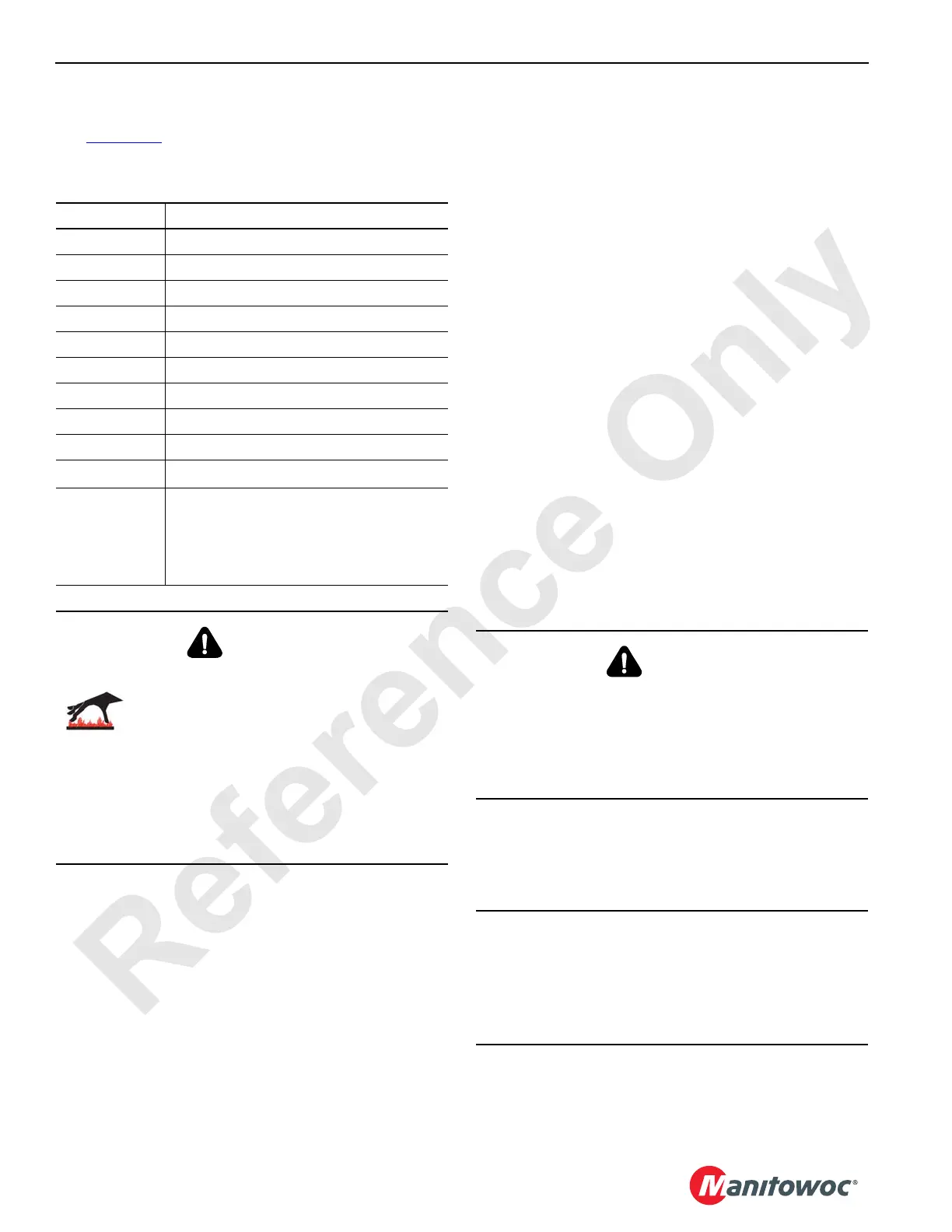